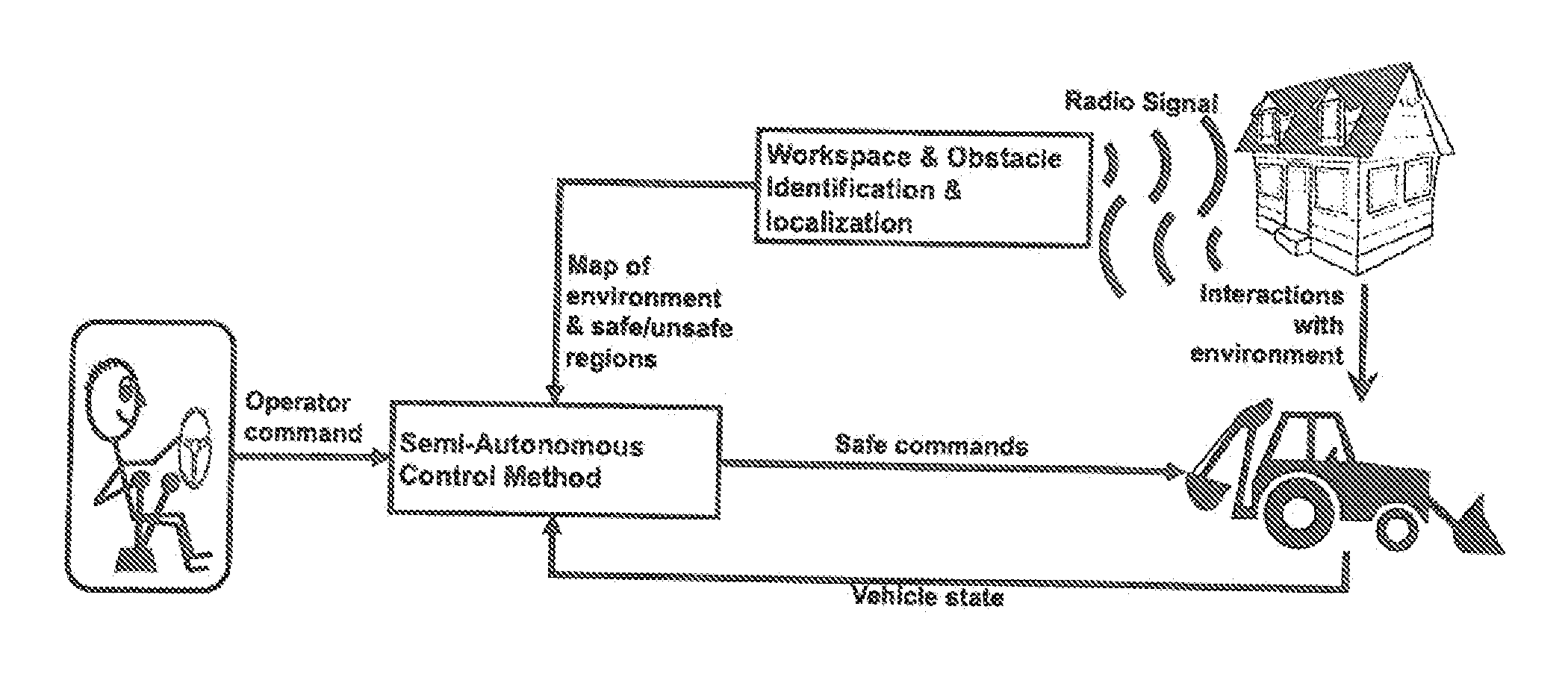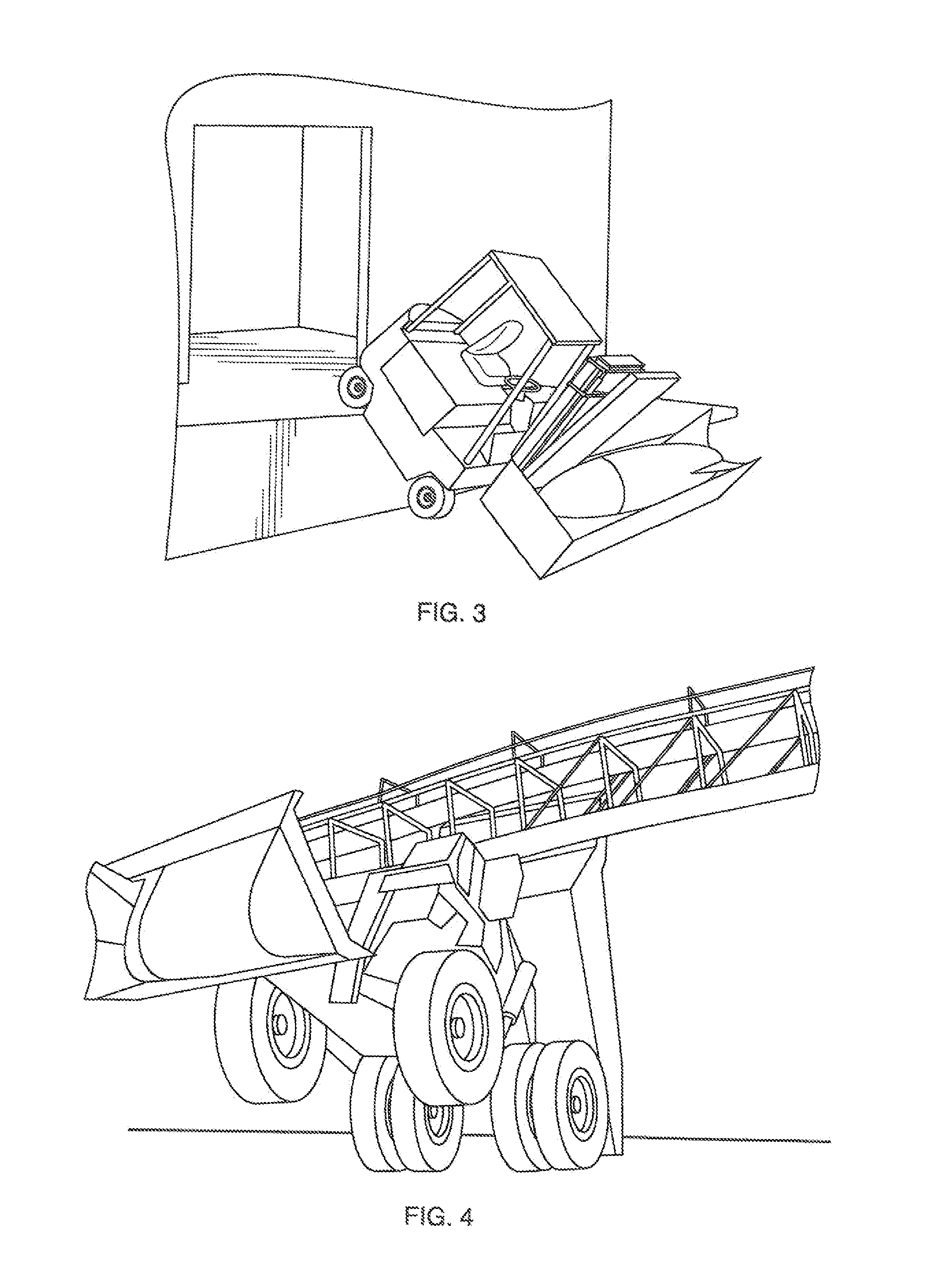Radio-enabled collision avoidance system
a collision avoidance and radio-enabled technology, applied in the field of radio sensors, can solve the problems of requiring significant re-working, requiring intensive and often variable signal processing, and requiring laser, radar, camera-based instrumentation arrays for the sensing system used on vehicles
- Summary
- Abstract
- Description
- Claims
- Application Information
AI Technical Summary
Benefits of technology
Problems solved by technology
Method used
Image
Examples
Embodiment Construction
[0030]The method and apparatus disclosed herein provide a fast, inexpensive, and robust means of preventing unintended collisions between a human-controlled machine (e.g., forklift, excavator, medical instrument, industrial manipulator, etc.) and hazardous or impassible regions of the environment (warehouse shelving, gas piping, unintended organs, pedestrians, etc.). FIG. 1 shows a block diagram for this system as applied to a scenario in which an excavator performs work near a house. In this case, regions of the house that should not be hit might be tagged beforehand with radio tape, and any gas pipelines near the workspace might be marked with radio emitters. The controller onboard the excavator then reads in the radio signal, designs constraints based on the position of radio emitters, and ensures that neither the excavator tool (e.g., backhoe, jackhammer, etc.) nor the excavator vehicle itself (e.g., tractor body) collides with the house or pipeline. Note that in this system, th...
PUM
 Login to View More
Login to View More Abstract
Description
Claims
Application Information
 Login to View More
Login to View More - R&D
- Intellectual Property
- Life Sciences
- Materials
- Tech Scout
- Unparalleled Data Quality
- Higher Quality Content
- 60% Fewer Hallucinations
Browse by: Latest US Patents, China's latest patents, Technical Efficacy Thesaurus, Application Domain, Technology Topic, Popular Technical Reports.
© 2025 PatSnap. All rights reserved.Legal|Privacy policy|Modern Slavery Act Transparency Statement|Sitemap|About US| Contact US: help@patsnap.com



